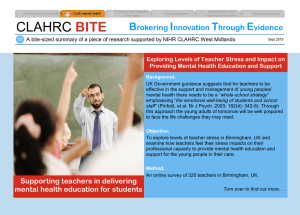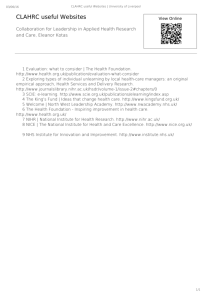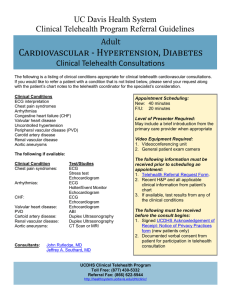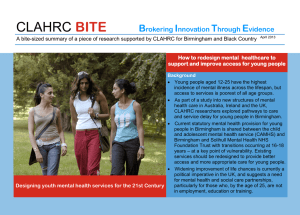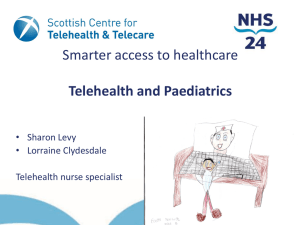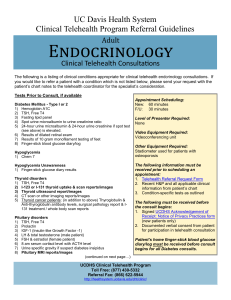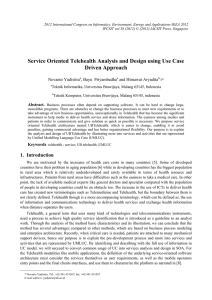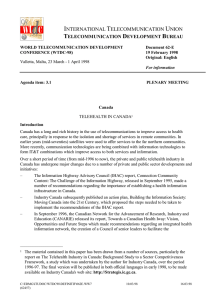CLAHRC BITE B
advertisement
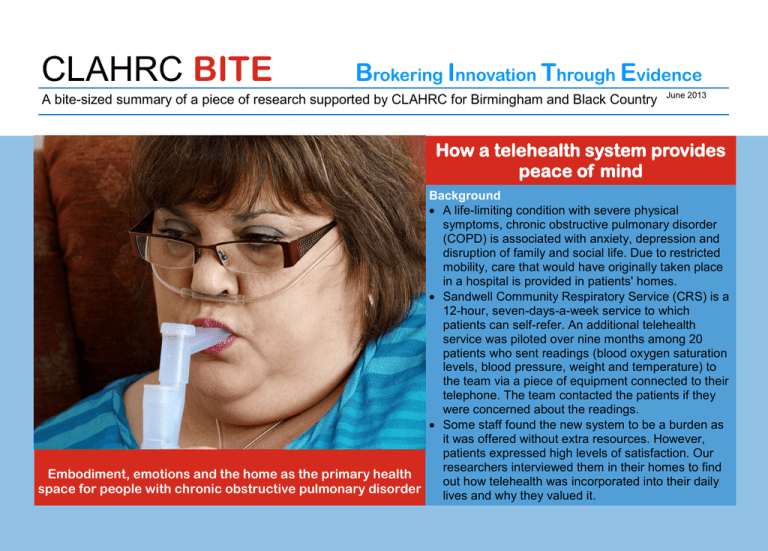
CLAHRC BITE Brokering Innovation Through Evidence A bite-sized summary of a piece of research supported by CLAHRC for Birmingham and Black Country June 2013 How a telehealth system provides peace of mind Background A life-limiting condition with severe physical symptoms, chronic obstructive pulmonary disorder (COPD) is associated with anxiety, depression and disruption of family and social life. Due to restricted mobility, care that would have originally taken place in a hospital is provided in patients' homes. Sandwell Community Respiratory Service (CRS) is a 12-hour, seven-days-a-week service to which patients can self-refer. An additional telehealth service was piloted over nine months among 20 patients who sent readings (blood oxygen saturation levels, blood pressure, weight and temperature) to the team via a piece of equipment connected to their telephone. The team contacted the patients if they were concerned about the readings. Some staff found the new system to be a burden as it was offered without extra resources. However, patients expressed high levels of satisfaction. Our researchers interviewed them in their homes to find Embodiment, emotions and the home as the primary health out how telehealth was incorporated into their daily space for people with chronic obstructive pulmonary disorder lives and why they valued it. Findings People with COPD and their carers described how the telehealth system was easy to integrate into their homes and, most importantly, brought them ‘peace of mind’. There were two ways in which this happened. The first was that it legitimised their contact with health professionals. Participants said they often felt vulnerable and anxious but still tended to wait until their condition seriously worsened before seeking help as they were conscious that they were already high users of the NHS. With telehealth, as soon as the vital signs readings showed that they were more sick, this triggered a response from the CRS, so patients felt that this ensured that the nurses telephoned or visited only when they were really needed. The second mechanism was that it built their confidence in managing their own condition. By taking their own readings, patients gained an increased understanding of how their body was functioning on a day-to-day basis. Telehealth also reduced feelings of anxiety and isolation; people with COPD felt more connected to the nurses. References Gale N, Sultan H. Telehealth as ‘peace of mind’: embodiment, emotions and the home as the primary health space for people with chronic obstructive pulmonary disorder. Health Place.2013;21C:140-147. Recommendations for practice It is important that staff are happy with the way new technologies are incorporated into services, but commissioners should also carefully consider the experiences of the users of these new technologies. For some COPD patients, the benefits of telehealth are not just medical. Telehealth can build their confidence in managing their condition and improve their sense of connection to others. What is CLAHRC for Birmingham & Black Country? The Collaborations for Leadership in Applied Health Research and Care (CLAHRC) is a partnership between the University of Birmingham and a number of NHS organisations in Birmingham and Black Country. We are funded by the National Institute for Health Research with a mission to undertake high-quality applied health research focused on the needs of patients to improve health services locally and beyond. For further information, visit: www.clahrc-bbc.nihr.ac.uk The research was funded by the National Institute for Health Research. The views expressed are those of the author and not necessarily those of the NHS, the NIHR or the Department of Health.

